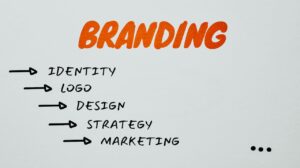Psychology is a science that allows people to understand the complexities of human behavior. So if you want to invoke a specific type of behavior, this is where you need to turn to for clues. When dealing with website design, you should use various tricks rooted in psychology to create pages which visitors will love. And you can use these same principles to guide those visitors to specific sections of pages and to inspire specific actions.
Before we begin, however, you need to remember that whilst keeping these psychological tricks in mind, you should also not omit to learn how to design your website for speed. Fast loading pages are a must today, if only because this is a factor that affects your Google ranking.
Applying color psychology to your website design also should go without saying. According to Lindsay Kolowich of HubSpot, even the most subtle detail can alter page performance significantly. For example, a red CTA button generates 21% more clicks than a green one.
How to Design a Website That Rocks Using the Power of Psychology
1. Weaponize the Von Restorff Effect anyway you can
In simple terms, the Von Restorff Effect can be explained as “the one which is different stands out”. This simplest of principles is your most potent weapon when designing a website. Applying it strategically will enable you to draw the visitor’s attention to specific features of the page immediately. And all you need to achieve this is to place a few similar items together with the one you want to bring the attention to smack in the middle of them, and looking different.
And that is all there is to it. Simply post pictures of your product standing out in bright colors amid items that are similar in shape but aren’t quite there. Playing on contrasting colors will also work in this case.
You can also use this principle in ways other than simply to advertise your products. Joe Robinson, a cybersecurity expert from VPN Teacher, reminds us that trust seals are the second most important sign used to identify a safe website. Thus making them highly visible adds another layer of psychological influence to your website design because they invoke subconscious trust from customers. This simple detail can make a great difference to eCommerce businesses and a number of other services that require visitors to share their personal information.
Also note that when playing around with the visuals on your pages, you need to remember about mobile optimization of the website. You have to make sure that the layout you create for achieving psychological impact will transfer to the smaller sized screens as well.
3. Use Gestalt psychology to make an impact on multiple levels
The focus of Gestalt psychology study is the human perception of the world, so it’s little wonder that applying its principles of form perception to website design makes a huge impact on people who see these pages.
The laws you need to use when applying this science to web design and marketing are:
- The law of proximity.
Humans perceive objects located next to each other as a group. You’ll need to use white space to separate several distinctive groups of objects. - Law of pragnanz.
This is the law of “figure-ground” and it basically means creating visual elements that are one thing, yet look like something else at the same time, like this. Adding visuals of this type to your website design guarantees that the element will attract a lot of attention. This works best for logos since such images are more memorable. - Law of similarity.
Same as the law of proximity, the law of similarity states that humans perceive objects which look similar as one unit. - Law of symmetry.
This law explains that humans perceive objects as symmetrical shapes. When used in design, this means that placing two similar objects symmetrically will increase the impact of the image as a whole. You can use this for extra marketing power. - Law of closure.
Think of the vase example for the law of pragnanz. The vase image wasn’t complete, yet you perceive it as a complete shape. This happens because your mind subconsciously “fills in the blanks”. It’s another psychological sleight that you can use to make your logo or some other element of the website design more memorable.
3. Add a decoy
The decoy effect is one of the most powerful tools you can use use for boosting sales. In terms of website design, you can apply it by adding another line to your copy which announces discounts. This one must offer the worst kind of deal possible. This way, the impact of the ad will be more significant than simply seeing a banner for a new discount, and your sales will go up.
Use this ruse for landing pages and make sure that the decoy option you include isn’t too conspicuously bad, but is the complete opposite of the one you want to guide your website visitors to.
4. Provoke visceral reactions by your design
To provoke a visceral reaction means to generate an instant overwhelming emotional response from the visitor. Of course, as you are doing this to boost your marketing strategy you will need to generate a positive reaction, and bear in mind that visceral reactions can be negative as well. You need to be careful not to trigger this as it will make an unshakeable negative impression upon your prospective customers. The visceral reaction you should aim for will occur if you fill your pages with highly pleasing visuals, like pictures of cute kittens or sunsets.
These are only a few of the tricks that psychology has to offer, so be sure to follow the latest news in the field and look for ways to apply them to your business.




